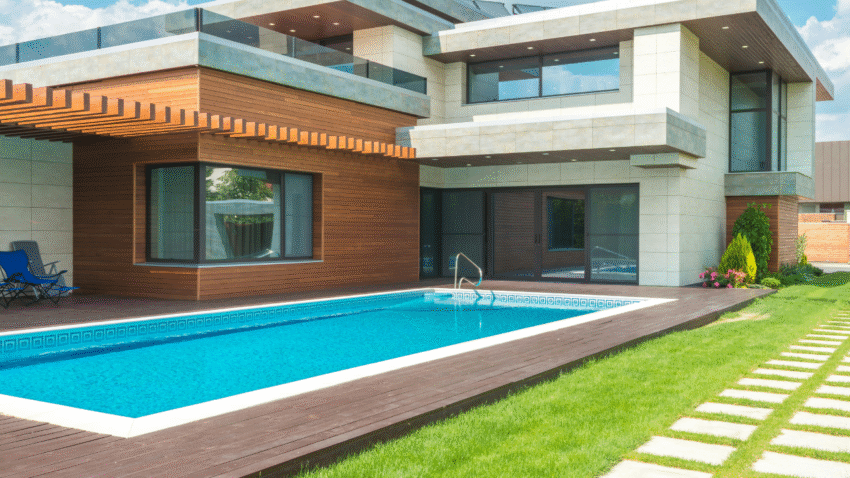Introduction
A deck without railings can be risky, especially if it’s raised more than a foot above ground. Learning how to add railings to a deck for safety not only protects your family and guests but also enhances the overall look of your outdoor space. Many homeowners delay installing railings because they assume it’s complicated or costly, but with the right tools and planning, this project can be straightforward and rewarding.
Why Railings Matter for Your Deck
Adding railings to your deck is more than just a building code requirement—it’s a practical upgrade with multiple benefits:
- Safety First: Prevents falls and accidents, particularly for children, pets, and older adults.
- Compliance: Meets local building codes, which usually require railings for decks over a certain height (commonly 30 inches).
- Durability: Properly installed railings add strength and stability to deck edges.
- Aesthetic Appeal: Comes in a variety of materials and styles to match your home.
- Property Value: A finished, safe deck adds curb appeal and resale value.
Step-by-Step Guide to Adding Railings to a Deck
Step 1: Check Local Building Codes
Before starting, review your city or county building codes. Most require:
- Railings on decks above 30 inches from the ground.
- Rail heights of 36–42 inches depending on location.
- Spacing between balusters no more than 4 inches apart.
These rules ensure your railing meets safety standards.
Step 2: Choose Your Railing Material
Select a material that suits your style, budget, and maintenance preference:
- Wood: Classic and affordable but requires sealing or staining.
- Vinyl: Low-maintenance and weather-resistant.
- Metal (aluminum, steel, wrought iron): Strong, modern, and durable.
- Composite: Blends durability with the look of wood.
- Glass panels or cable railings: Provide clear views and a contemporary touch.
Step 3: Measure and Mark Post Locations
Railings are supported by posts, usually installed at corners and every 6–8 feet along the deck. Mark their placement using chalk or a pencil. Proper spacing ensures strength and stability.
Step 4: Install the Railing Posts
- Drill holes into the deck frame where posts will be attached.
- Secure posts with carriage bolts, lag screws, or post brackets.
- Ensure posts are plumb (perfectly vertical) using a level.
For safety, posts must be anchored into the deck’s frame, not just the surface boards.
Step 5: Attach the Bottom and Top Rails
- Cut the rails to fit between posts.
- Attach the bottom rail 3–4 inches above the deck surface.
- Attach the top rail at the required height (36–42 inches).
- Use screws or brackets for secure fastening.
Step 6: Install Balusters or Infill
Balusters (vertical spindles) or other infill materials prevent people from slipping through the railing.
- Space balusters no more than 4 inches apart.
- Use a spacer block for consistent gaps.
- Secure each baluster with screws or clips.
For modern looks, substitute with cable railing or glass panels.
Step 7: Add the Top Cap (Optional)
A top cap provides a smooth, finished surface along the railing. This is especially useful if you want to use the railing as a resting place for drinks or décor.
Step 8: Secure Railings and Test Stability
Once installed, apply pressure to different sections of the railing. It should feel solid with no wobbling. Reinforce weak spots with additional screws or brackets.
Step 9: Apply Finish or Paint (for Wood)
If using wood, stain or paint the railing with weather-resistant sealant to prevent rot and fading. Other materials like vinyl, metal, and composite generally don’t need finishing.
Step 10: Add Safety and Style Enhancements
- Install post caps with built-in solar lights for visibility at night.
- Add childproof gates if needed.
- Decorate with planters or string lights for a cozy look.
Common Mistakes to Avoid
- Mistake: Attaching Posts Only to Deck Boards
This creates weak railings that can collapse under pressure.
Solution: Always secure posts into the deck’s frame or joists. - Mistake: Ignoring Building Codes
Non-compliant railings may fail inspections or pose safety hazards.
Solution: Review and follow local regulations before starting. - Mistake: Using Incorrect Spacing
Wide gaps in balusters compromise safety.
Solution: Keep spacing under 4 inches. - Mistake: Neglecting Proper Fasteners
Ordinary screws may rust or loosen outdoors.
Solution: Use galvanized or stainless-steel hardware. - Mistake: Forgetting Maintenance
Even strong railings degrade without care.
Solution: Inspect annually and refinish wood every 2–3 years.
Extra Patio & Deck Tips & Hacks
- Pre-Built Railing Kits: Many hardware stores sell railing kits that simplify installation.
- Hidden Fasteners: Use concealed brackets for a cleaner appearance.
- Mix Materials: Combine wood posts with metal balusters for durability and style.
👉 Want to expand your deck further? Read our guide on how to build a multi-level deck for more space for more inspiration.
Conclusion
Adding railings to your deck is one of the most important safety upgrades you can make. By choosing the right materials, following building codes, and installing posts securely, you’ll create a deck that’s not only safe but also stylish.
Pro tip: Don’t treat railings as just a requirement—use them as an opportunity to enhance your deck’s design while keeping your family safe.
Bookmark this guide and start your railing project with confidence.
